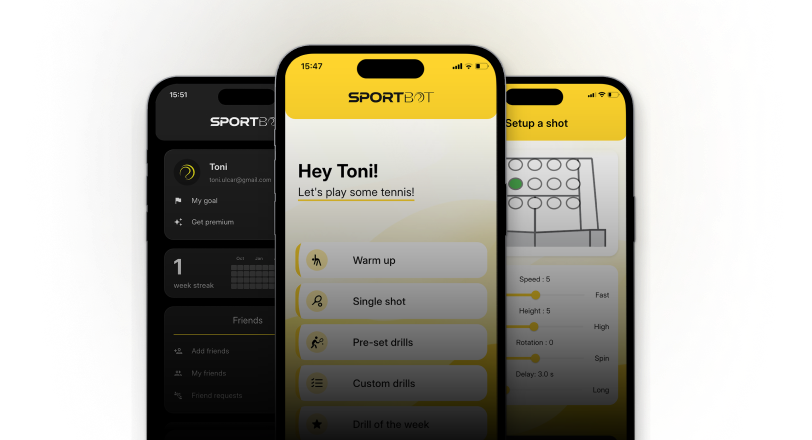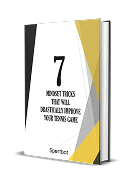





Moving TENNIS ball launcher
Master forehands, backhands, volleys or smashes exactly how you face them in matches. From deep rally balls to short approach shots, master timing and consistency that opponents can’t break down.
Moving PADEL ball launcher
Perfect your bandejas, víboras, and wall rebounds with realistic padel trajectories. Train defensive lobs, off-the-glass recoveries, and fast net reactions, so every rally feels under your control, no matter the situation.

Control your Sportbot easily through the mobile app. Available for both iOS and Android devices.





Start training smarter with Sportbot.
Can the Sportbot be used on all surfaces?
Sportbot works on clay, hard, and hard-carpet courts. Movement on grass and very soft carpet surfaces is not supported (yet).
How many balls does it hold?
Sportbot holds up to 90 balls — the same capacity as a full coaching basket, ideal for extended training sessions.
How long does the battery last?
Each battery provides up to 90 minutes of playtime and can be swapped in seconds. With spare batteries, you can train for hours without interruption.
Can I switch between topspin, slice, and different ball heights?
Absolutely. Sportbot lets you fully customize every shot — including spin, height, tempo, frequency, and launch position — to match your training goals.
What is the minimum delay between the ball launches?
1.75 seconds. That’s a professional-level tempo for high-intensity drills.
Does the Sportbot have any AI features?
Yes. Sportbot uses machine vision and AI-driven analysis to provide feedback, track your performance, and deliver personalized drill recommendations.
How do I transport the Sportbot?
Built-in transport wheels and an ergonomic handle make moving the 23 kg unit simple and efficient.
How do I control the Sportbot?
You can control it directly via the rear interface or wirelessly through the Sportbot mobile app for full flexibility on the court.
What’s the warranty period?
Sportbot comes with a one-year standard warranty. Extended coverage is available — please contact us for more details.

Learning tennis is hard. We get it.
But it doesn’t have to be that way. Learn 7 mindset tricks that will drastically improve your tennis game.
